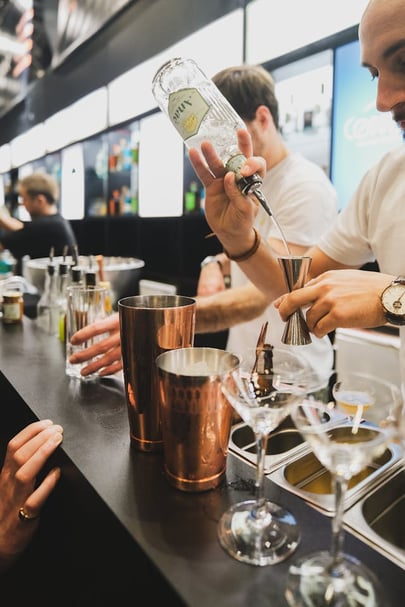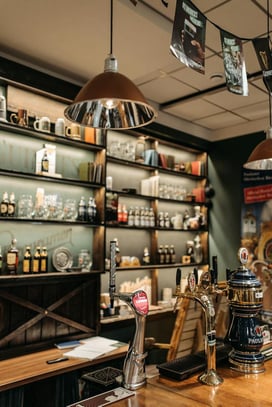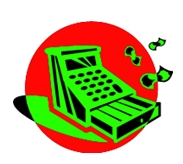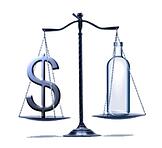Discover the hidden gems of Nashville's nightlife with our guide to the top speakeasies in Music City.
Uncovering Nashville's Hidden Bars
Nashville is known for its vibrant music scene, but nestled within its bustling streets are some of the most intriguing speakeasy bars. These hidden gems offer a unique blend of history, charm, and exclusivity that make them a must-visit for any nightlife enthusiast.
From secret entrances to password-protected doors, uncovering these clandestine spots is an adventure in itself. Whether you're a local or a traveler, the thrill of discovering Nashville's hidden bars is an experience like no other.
The History and Charm of Nashville Speakeasies
Speakeasies in Nashville harken back to the Prohibition era when such establishments were the only places where one could legally enjoy a drink. Today, these speakeasies capture that same mystique and charm, offering patrons a glimpse into a bygone era.
Each bar has its own unique story and decor, often featuring vintage furnishings, dim lighting, and an atmosphere that transports you back to the 1920s. This combination of history and ambiance makes Nashville's speakeasies truly special.
Top Nashville Speakeasies You Can't Miss
When it comes to speakeasies in Nashville, there are a few standout spots that should be on your radar. The Patterson House is renowned for its craft cocktails and intimate setting. For a more theatrical experience, check out Attaboy, where the bartenders create custom drinks based on your preferences.
Don't miss out on Old Glory, located in a former boiler room, offering a unique industrial-chic vibe. Each of these speakeasies brings something different to the table, making them must-visits during your stay in Music City.
What to Expect: Ambiance and Menu Highlights
Expect a warm, inviting atmosphere when you step into one of Nashville's speakeasies. The decor is often a blend of vintage and modern elements, creating a cozy yet stylish environment perfect for relaxing with friends or a date.
The menus at these bars are equally impressive, typically featuring a wide range of craft cocktails made with high-quality ingredients. From classic concoctions to innovative new drinks, there's something to satisfy every palate. Don't forget to try the small plates and appetizers that perfectly complement the drink offerings.
Tips for an Unforgettable Speakeasy Experience
To ensure you have an unforgettable experience, it's important to plan ahead. Some speakeasies require reservations, so be sure to book in advance. Knowing the password or secret entrance details can also add to the fun and mystery of your visit.
Dress to impress, as many speakeasies have a smart-casual dress code. Lastly, don't be afraid to strike up a conversation with the bartenders—they're often more than happy to share the history of the bar and recommend their favorite drinks.



 Money losers in a bar come in many forms, and you will want to check your financial records carefully to make sure that you are not being affected by one of these:
Money losers in a bar come in many forms, and you will want to check your financial records carefully to make sure that you are not being affected by one of these: Coin-operated entertainment machines are a great source of extra revenue for a bar. The eclectic nature of most bars means that coin-ops of all styles, sizes, and functions can fit perfectly within your surrounds while adding to the fun and flavor of your establishment. The profits that coin-ops generate can be huge; they can also run a lot deeper than just the money inserted into the machines.
Coin-operated entertainment machines are a great source of extra revenue for a bar. The eclectic nature of most bars means that coin-ops of all styles, sizes, and functions can fit perfectly within your surrounds while adding to the fun and flavor of your establishment. The profits that coin-ops generate can be huge; they can also run a lot deeper than just the money inserted into the machines. The trusty pinball machine has been around since the late 1800s yet still uses the same formula as the pinball machines of old. Lights, sound effects, the bounce of the ball, the sound of the flipper, and the lure of a high score. With a little smart thinking, your pinball machines can earn you a lot of money.
The trusty pinball machine has been around since the late 1800s yet still uses the same formula as the pinball machines of old. Lights, sound effects, the bounce of the ball, the sound of the flipper, and the lure of a high score. With a little smart thinking, your pinball machines can earn you a lot of money. New technology. Look at what's available on the market today. The dartboard has received a technological boost. Coin-operated dart systems not only keep score for your patrons, but they also bring in a new source of revenue. Turnkey systems can be purchased or brought in under a profit-sharing deal.
New technology. Look at what's available on the market today. The dartboard has received a technological boost. Coin-operated dart systems not only keep score for your patrons, but they also bring in a new source of revenue. Turnkey systems can be purchased or brought in under a profit-sharing deal.
 The savvy bar manager knows how to maximize profits and get the most sales possible without sacrificing ethics or drink quality. You can do the same if you follow a few simple tips. One simple way to maximize profits is by offering promotions or discounts. The small cost factor involved in initiating these promotions make them a good promotional vehicle.
The savvy bar manager knows how to maximize profits and get the most sales possible without sacrificing ethics or drink quality. You can do the same if you follow a few simple tips. One simple way to maximize profits is by offering promotions or discounts. The small cost factor involved in initiating these promotions make them a good promotional vehicle. Another way to maximize spending, and your bar's profits, is with bar tabs. Bar tabs make it easier for customers to spend without hassle, encouraging multiple orders of drinks. To allow bar tabs or not is a policy that can be debated from both sides with sound reasoning. Many bars and restaurants have been victimized by customers who walk out and do not pay their tabs. A policy of no bar tabs will alleviate the initial problem, but it will certainly be inconvenient—and possibly insulting—to some customers.
Another way to maximize spending, and your bar's profits, is with bar tabs. Bar tabs make it easier for customers to spend without hassle, encouraging multiple orders of drinks. To allow bar tabs or not is a policy that can be debated from both sides with sound reasoning. Many bars and restaurants have been victimized by customers who walk out and do not pay their tabs. A policy of no bar tabs will alleviate the initial problem, but it will certainly be inconvenient—and possibly insulting—to some customers. Your market and competitor research will likely reveal that most bars that are successful pay a lot of attention to customers. In fact, great service is one of the surest ways of drawing repeat customers. To draw more patrons to your bar on a regular basis, you do not have to spend a lot of money. However, you do have to think like a customer; you will likely notice a few things that need to change at your establishment:
Your market and competitor research will likely reveal that most bars that are successful pay a lot of attention to customers. In fact, great service is one of the surest ways of drawing repeat customers. To draw more patrons to your bar on a regular basis, you do not have to spend a lot of money. However, you do have to think like a customer; you will likely notice a few things that need to change at your establishment: Industry studies have consistently shown that a full 25% to 30% of a bar's liquor inventory never converts into registered sales. That is the equivalent of about six to eight 1.25 oz portions per bottle (which should yield at least 25 portions.) This loss of liquor volume--due to unauthorized comps, over-pouring, spillage or theft--should be of great concern to any bar manager.
Industry studies have consistently shown that a full 25% to 30% of a bar's liquor inventory never converts into registered sales. That is the equivalent of about six to eight 1.25 oz portions per bottle (which should yield at least 25 portions.) This loss of liquor volume--due to unauthorized comps, over-pouring, spillage or theft--should be of great concern to any bar manager.  Many of the best bartenders learn most of their useful trade while at work. This is because bartending schools vary widely in quality. Some emphasize the preparation of rarely requested drinks without stressing useful skills such as bar management, customer satisfaction, and customer safety. If you are hiring a bartender, you should consider the school he or she has attended, but testing practical skills will give the best clue of how many useful skills the person has for waiting on your bar. If you are considering attending a bartending school, investigate the school to make sure that you will be taught skills such as organization and techniques of serving. A good bartending school or course will emphasize dealing with customers. Be wary of a bartending school that is more of a "drink mix" school, stressing mixing many types of drinks without teaching anything besides drink preparation. There are many of these sorts of schools out there, which claim that a bartender's greatest asset is knowing how to mix an endless variety of drinks. Learning to mix the latest drink is relatively simple once one looks up the recipe, and most patrons will order the most popular drink of the moment rather than some obscure mix. A bartender with a good grasp of people and basic bartending techniques is usually more useful than the bartender who only knows how to mix hundreds of drinks from memory but has few skills besides. In some cases, an employee with a hospitality degree is better able to handle the bar job than someone who has attended a bartender school.
Many of the best bartenders learn most of their useful trade while at work. This is because bartending schools vary widely in quality. Some emphasize the preparation of rarely requested drinks without stressing useful skills such as bar management, customer satisfaction, and customer safety. If you are hiring a bartender, you should consider the school he or she has attended, but testing practical skills will give the best clue of how many useful skills the person has for waiting on your bar. If you are considering attending a bartending school, investigate the school to make sure that you will be taught skills such as organization and techniques of serving. A good bartending school or course will emphasize dealing with customers. Be wary of a bartending school that is more of a "drink mix" school, stressing mixing many types of drinks without teaching anything besides drink preparation. There are many of these sorts of schools out there, which claim that a bartender's greatest asset is knowing how to mix an endless variety of drinks. Learning to mix the latest drink is relatively simple once one looks up the recipe, and most patrons will order the most popular drink of the moment rather than some obscure mix. A bartender with a good grasp of people and basic bartending techniques is usually more useful than the bartender who only knows how to mix hundreds of drinks from memory but has few skills besides. In some cases, an employee with a hospitality degree is better able to handle the bar job than someone who has attended a bartender school.
